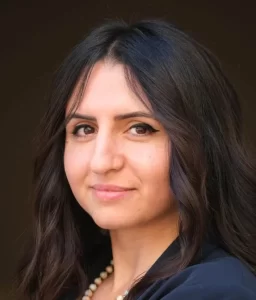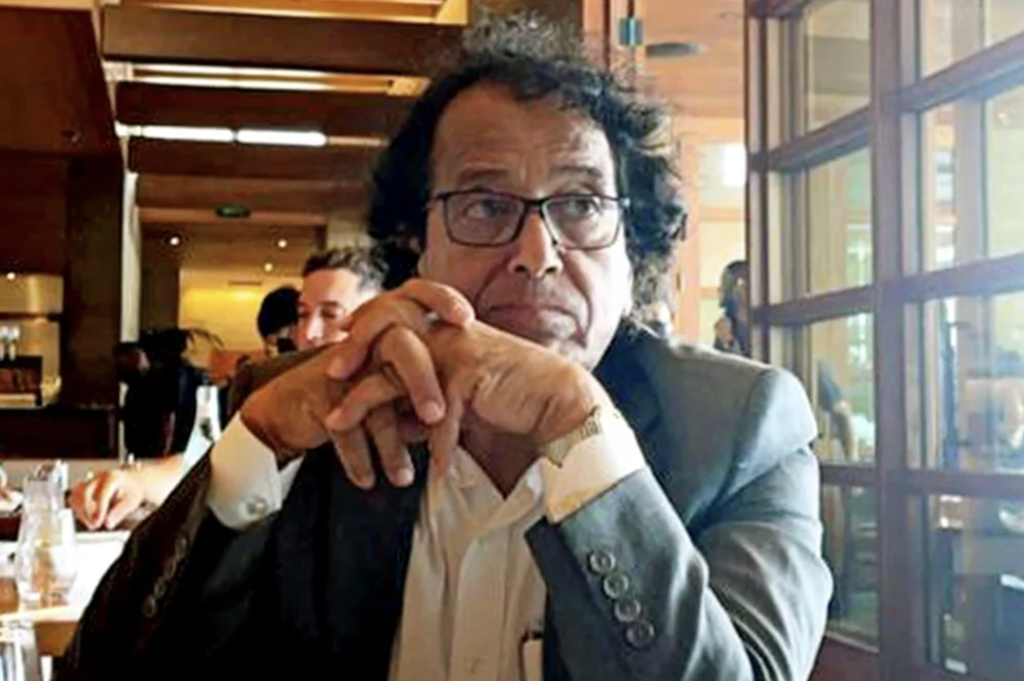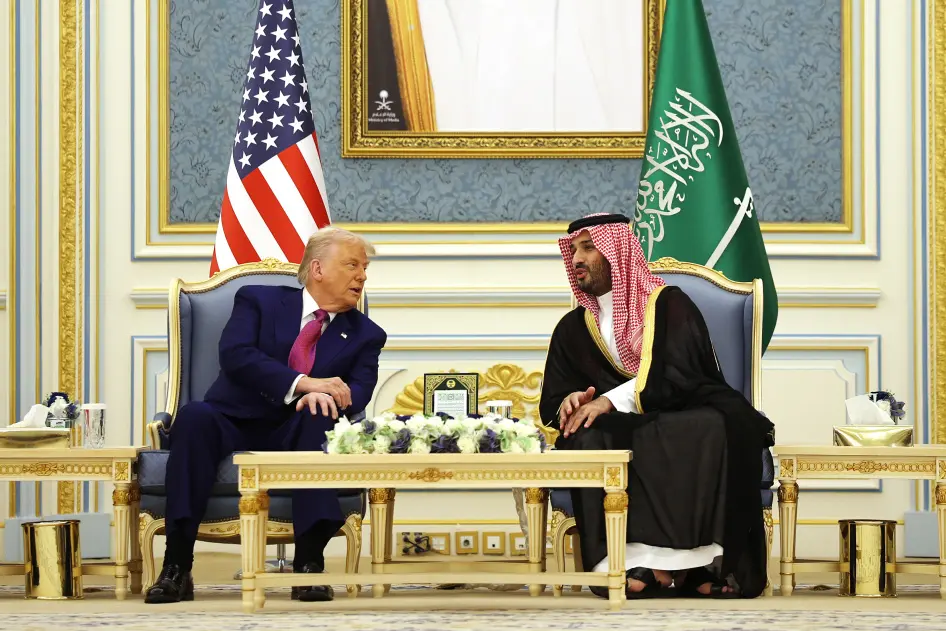Authoritarian governments across the region are rapidly deploying artificial-intelligence tools—from facial-recognition cameras to AI-generated deepfakes—to silence dissent. Simultaneously, major social media platforms have relocated key decision making to offices in countries with poor free-speech records, shrinking civil-society leverage.
On May 8, the Middle East Democracy Center’s Democracy Matters Initiative held a conversation to discuss this information landscape and explore three main questions:
- How are regimes weaponizing technology to manipulate information?
- What tactics already work for journalists and rights defenders to push back on authoritarian narratives?
- Which structural reforms would rebalance the information space in favour of democratic voices?
The panel of experts featured Mohamed Najem, the Executive Director of SMEX; Cathrine Abuamsha, Democracy Matters Initiative Advisory Group Member and Palestinian lawyer specializing in international law and human rights; Heba Al-Kadri, a Syrian journalist and expert on women’s rights, refugees, and data journalism in the MENA region. The event was moderated by Abdelrahman Ayyash, Senior Policy Manager at MEDC.
Below are highlights from the speakers’ remarks.
AI and Surveillance
Mohamed Najem highlighted the increasing scale of state surveillance in MENA, driven by significant investments in AI infrastructure from Gulf countries and the involvement of tech companies. With these structures, repression is being industrialized, and it is much easier for authoritarian regimes to whitewash history and promote revisionist narratives. Cathrine Abuamsha presented a case from Palestine, where facial recognition technologies are now in widespread use at Israeli checkpoints in the West Bank, where she lives. She emphasized how these systems are integrated into biometric databases. Cathrine made it clear that the algorithm has become the judge and jailer, and the case of the ongoing genocide in Gaza, it has also become the executioner!
The panelists agreed: the new authoritarian language is algorithmic—and it is spreading.
The Mechanics of Disinformation
Heba al-Kadri provided examples on coordinated disinformation campaigns in Syria, where a small number of X accounts amplified false narratives following an attack on the Alawite minority in the Syrian coastal cities. The result was a quick shift in public perception, reframing the event as false or even as a foreign intervention, as the Syrians were flooded by fake news that was created to provoke emotional and angry reactions.
The problem was fake news is not mainly about lies. Heba argued that it’s about drowning out the truth. Dictators win if the audience doesn’t know what to believe.
Cathrine described this as a form of digital erasure. For Palestinians, the battle is not just for bandwidth—it is for legitimacy. The biased enforcement of content moderation—Palestinian content in Arabic is disproportionately removed or restricted, while Hebrew-language incitement to violence against Palestinians remains online and the official Israeli government narrative towards the Palestinian-Israeli conflict dominates social media.
The panel also noted how tech platforms—operating out of regional headquarters in countries like the UAE and Saudi Arabia—are increasingly shaping these dynamics, quietly aligning with, and selling user data to, authoritarian interests for profit.
Resistance and Reform
Despite these challenges, the panel highlighted several avenues of resistance. The role of strategic litigation was emphasised, and the WhatsApp lawsuit against NSO Group and SMEX’s documentation efforts were mentioned as key interventions, albeit requiring time and resources.
One of the examples of resistance is a platform called “7or” (حر), launched by the Arab Center for the Advancement of Social Media (7amleh), as the first Palestinian platform dedicated to documenting digital rights violations.
The panel advocated for real transparency using data-driven journalism to uncover disinformation networks and promote cross-border investigative collaborations.
One of the important points of discussion was how AI can be used to support fact-checking and counter misinformation. It is easier for everyday users to detect false narratives and verify claims posted online. This means that while AI is being weaponized to curtail freedoms, it can also help online populations to identify and respond to disinformation without needing special technical expertise.
The discussion moved beyond standard fact-checking via data-based journalism and fact-checking organizations’ approaches to consider broader questions of narrative control and digital memory. Panelists called for long-term infrastructure that supports truth-telling, resilience, and community-defined notions of safety through building coalitions between different organizations focused on strategic litigation and sharing techniques to counter efforts by authoritarian regimes to control the online narrative.
Key Takeaways
AI-enabled repression is now “off-the-shelf.” The Israeli government and sovereign-wealth funds in the Gulf are exporting turnkey facial-recognition, predictive-policing, and deep-fake systems to cash-strapped autocracies. This convergence of money and technology removes the cost barrier that once slowed surveillance roll-outs.
Disinformation-by-flooding supplants persuasion. Regimes need not convince audiences of a lie; rather they flood the zone with conflicting stories until facts lose salience. A handful of centrally managed botnets can hijack an Arabic hashtag within minutes of a breaking story, as seen after recent incidents in Syria and Palestine.
Platform capture accelerates linguistic marginalization. Meta and X regional sales hubs prioritise revenue and state relations over accountability, resulting in opaque content-moderation that disproportionately penalizes and censors Arabic-language users.
Legal pathways work—but demand coordination and stamina. Landmark victories such as the recent WhatsApp v. NSO Group took more than four years and millions of dollars. Strategic litigation therefore needs collaborative funding and patient coordination among plaintiffs, technologists, and lawyers.
Conclusion
Authoritarian actors in the MENA region are no longer merely censoring the internet; they are weaponizing it. Yet the panel’s experience demonstrates that coordinated, well-resourced resistance can still tilt the field. Rapid tactical responses—OSINT, verification, litigation—must be matched by structural reforms: stronger procurement standards, alternative media business models and protections for insiders who speak out.






